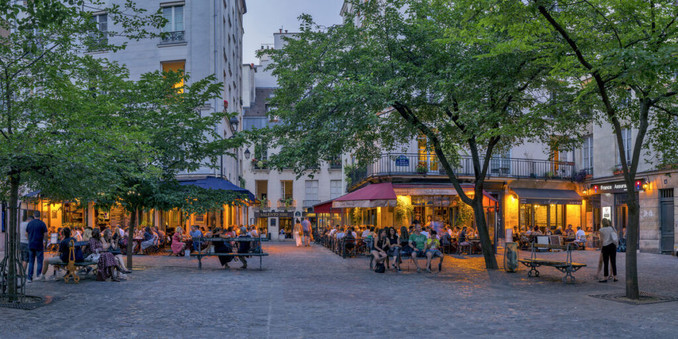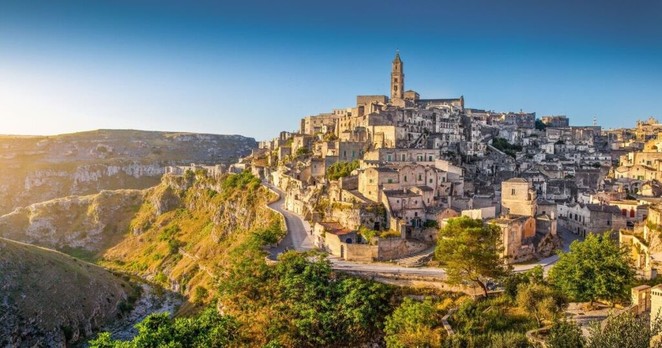24 Hours in Paris, France for a Food Lover https://www.byteseu.com/915161/ #Cities #Europe #France #Global #LindseyTramuta #nation #paris #Standard #ThrillistEditorial #Travel
Frühere Suchanfragen
Suchoptionen
#cities
Italy’s oldest city that’s a 10,000-year-old ancient paradise carved into a rock | World | News https://www.byteseu.com/914210/ #Cities #CitiesToVisitInItaly #EuropeanCapitalOfCulture2019 #Italy #ItalyTourism #Italy'sOldestCity #Matera #PlacesToVisitInItaly #SassiDiMatera #TheWorld'sOldestCities #tourism #UnescoWorldHeritage
https://www.europesays.com/1988248/ Italy’s oldest city that’s a 10,000-year-old ancient paradise carved into a rock | World | News #Cities #CitiesToVisitInItaly #EuropeanCapitalOfCulture2019 #italy #ItalyTourism #Italy'sOldestCity #Matera #PlacesToVisitInItaly #SassiDiMatera #TheWorld'sOldestCities #tourism #UNESCOWorldHeritage
In recent years, satellite cities have begun sprouting on the fringes of many African cities, promising an orderly, modern alternative to their grit and congestion. Many of the projects have flopped, but Kenya’s Tatu City is poised to be an exception. #kenya #africa #cities
Posted into WHAT JUST HAPPENED IN YOUR WORLD @what-just-happened-in-your-world-csmonitor

In recent years, satellite cities have begun sprouting on the fringes of many African cities, promising an orderly, modern alternative to their grit and congestion. Many of the projects have flopped, but Kenya’s Tatu City is poised to be an exception. #kenya #africa #innovation #cities
Posted into WHAT JUST HAPPENED IN YOUR WORLD @what-just-happened-in-your-world-csmonitor

@ckent @nickzoic @jessta That 3–5 storey range is a good happy medium. Especially if there's shops or cafés on the ground floor.
Having looked at apartments lately, it's amazing the difference that bigger room sizes, a wider living room, and a larger balcony can make.
I think there's also an underserved need for more 3 to 4 bedroom apartments.
And in terms of housing affordability, 4 bedrooms might make housing more affordable for people.
How?
Because many people — especially younger people — share an apartment.
So even if the apartment costs $1000 per week, if it's shared between four housemates, that works out to just $250 each per week.
https://www.alojapan.com/1241523/the-best-luxury-train-trips-from-europe-to-japan/ The Best Luxury Train Trips From Europe to Japan #amsterdam #art #cities #europe #Japan #JapanTrips #Pursuits #rome #travel #trips #venice In 2025 the most luxurious new hotel room may be on wheels. L’Observatoire, a two-person suite on Belmond’s Venice Simplon-Orient-Express, will command rates of £80,000 ($101,000) per night when it enters service in March, making it the most expensive train cabin ever. For that sum, guests will get to slee…
Wonder why there are no cars in Sequoia, the #solarpunk city in "A New Faith"?
https://bldgblog.com/2013/05/sim-city-an-interview-with-stone-librande/

@tom_andraszek I think we've got a not dissimilar reference point.
For me, its Laisves alėja in Kaunas (in Lithuania).
There's two rows of trees down the middle.
There's park benches under many of those trees.
The generally accepted rule is that you cycle (or skateboard) in that area.
There's a wide pedestrian space either side.
The buildings on either side are around four storeys tall.
You have shops and cafés on the ground floor, with all fresco dining.
You have small offices (doctors, dentists) and apartments on the floors above.
The pedestrianised street runs the entire length of the Kaunas CBD.
It begins in the old town, near Kaunas Castle and the confluence of the Nemunas and Neris Rivers.
It runs around 1.6 kilometres east.
There are trolleybuses running parallel along the streets one block north and one block south.
It would be worthwhile for Australian urban planners to head out to Kaunas just to see this one street.
I guarantee they'd learn a lot about what a pedestrianised space should be.
Importance Score: 75 / 100
Revolutionizing Las Vegas Transportation: The Innovative Convention Center Loop
The Las Vegas Convention Center Loop (LVCC Loop), a groundbrea...
More » https://newsflash.one/2025/04/06/the-1-5-mile-long-underground-highway-that-cost-40bn-and-moves-4400-passengers-per-hour/?feed_id=920822&_unique_id=67f346b9d6a0c

Importance Score: 75 / 100
“This is the largest day of protest since Trump retook office,” the group added. “And in many small towns and cities, activists are reporting the...
More » https://newsflash.one/2025/04/06/millions-may-have-protested-trump-and-musk-yesterday/?feed_id=920788&_unique_id=67f33b799b228

Importance Score: 75 / 100
Housing Crisis in Majorca Escalates as Protests Erupt Over Affordable Housing
The housing crisis in Majorca reached a critical point this week...
More » https://newsflash.one/2025/04/06/locals-left-fearing-majorca-will-become-like-venice-amid-overtourism-and-housing-crisis/?feed_id=920689&_unique_id=67f31ee1c6c55

Importance Score: 82 / 100
Spain Housing Crisis Protests Intensify Across 40 Cities
Nationwide demonstrations rocked Spain this weekend as the housing crisis reached a cr...
More » https://newsflash.one/2025/04/06/win-for-protesters-as-malaga-cancels-plans-for-1300-tourist-homes-and-mulls-total-ban/?feed_id=920622&_unique_id=67f30c99a52f4

Ohh… and this would reduce greenhouse gas emissions by tackling one of the hardest to abate sectors in the US.
/fin
2. Buses - the top two reasons why people don’t use buses for transportation are their low frequency and unreliability. Adding buses (electric would be nice but not necessary) that improves coverage in terms of both geography and frequency/reliability can solve this problem. Having promotional mechanisms such as long-term discounted passes and/or free days would further encourage people to use buses.
/9
1. E-bikes - the number one reason why people don’t use bikes is that they are afraid to share the road with hulking cars hurtling around. Quick and cheap methods such as installing steel/cement bollards to protect bike lanes can effectively address the safety concern. Providing additional rebates for e-bike purchases would encourage faster adoption.
/8
The vast majority of car trips in the US are short (<3 miles). These could be easily replaced by e-bikes. There are many others that could easily be replaced by buses. There are two ways to alleviate the inflationary effects of car ownership which rest entirely in the hands of blue cities (and to a lesser extent state) governments:
/7
The nostalgia of American car-manufacturing supremacy and the so-called American dream of suburbia (cars, lawns, etc.) had a stranglehold on American politics. In one stroke, the federal government has wrecked it. Let us not resurrect it. Let us build something better.
/6
The tariff regime, specifically, on cars is likely to substantially increase the cost of new cars and parts/supplies for maintaining the existing fleet. Rather than attempting to end the tariff regime in order to restore the primacy of a car/oil-centric life in the US, blue cities/states should attempt to diminish it massively.
/3


 Anoxinon e.V.
Anoxinon e.V. 








